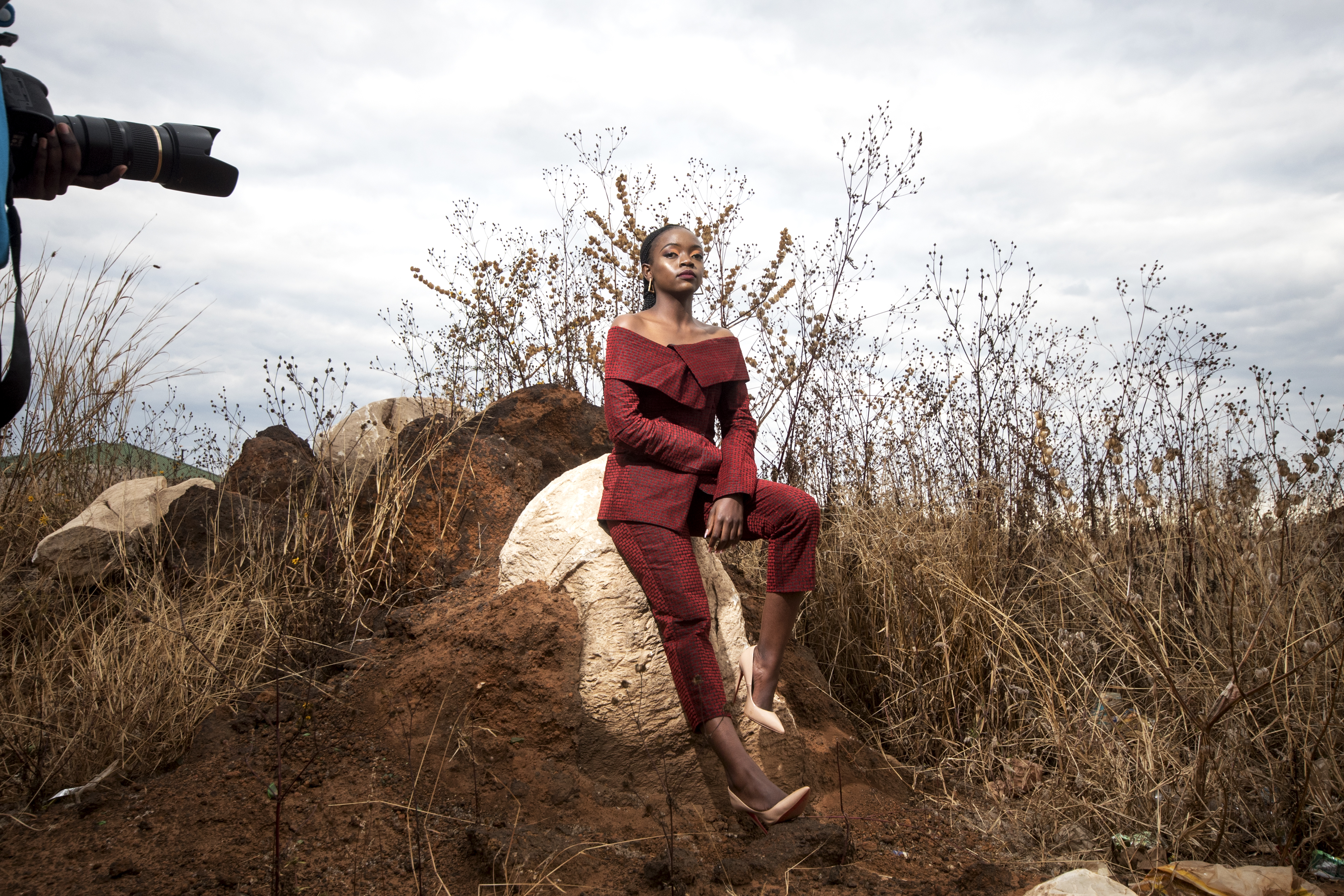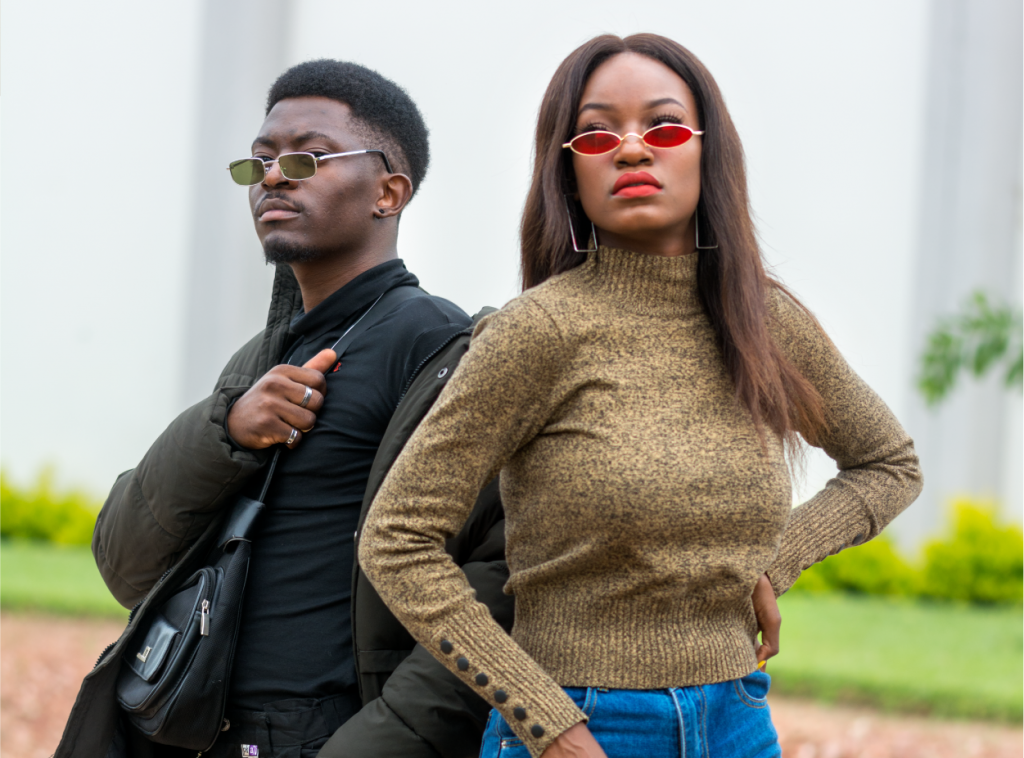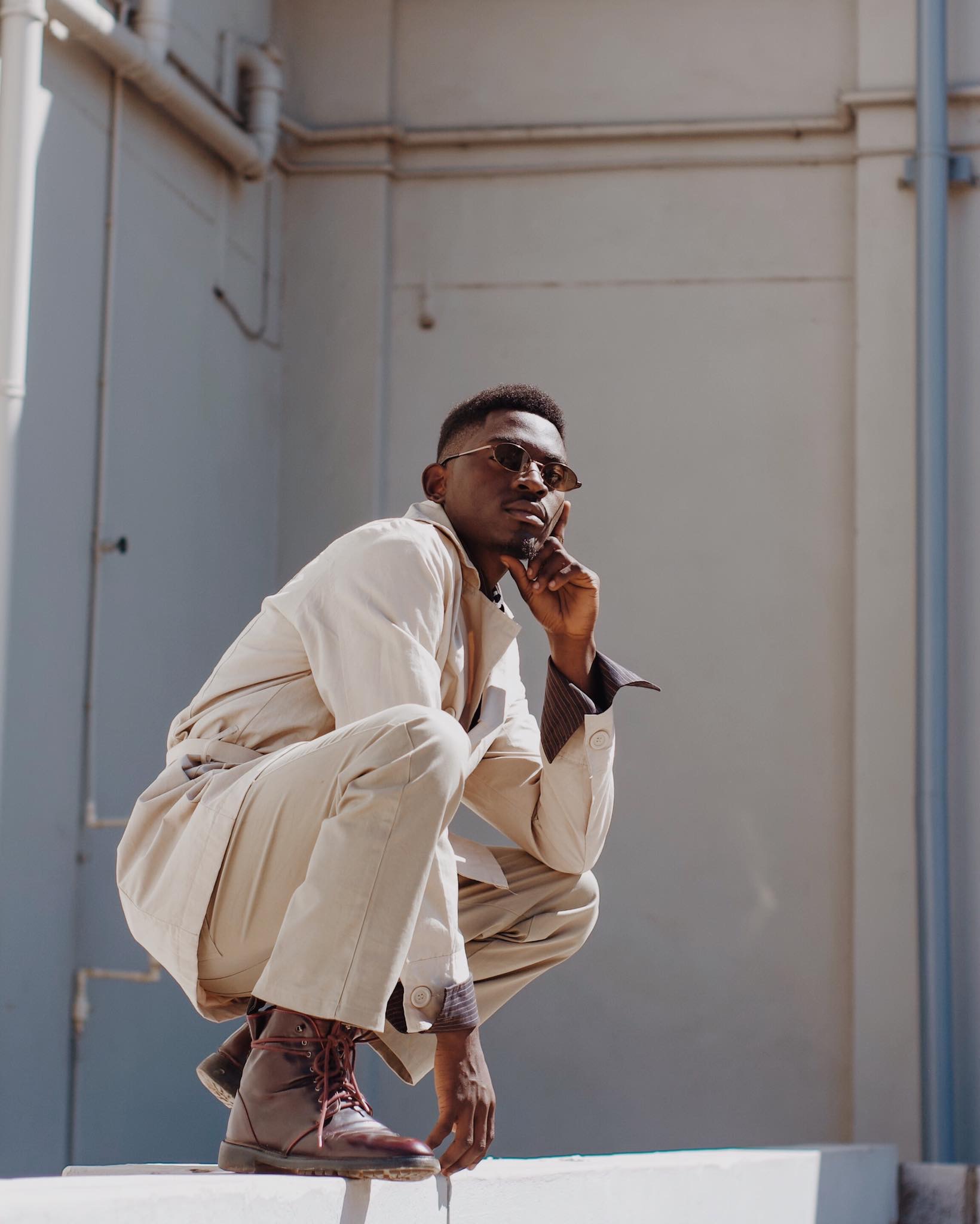Chitenge, also known as African wax print fabric, kitenge (in East Africa) and ankara (in West Africa), is a fabric that has come to epitomise African fashion over the last several years. It was typically used by African women in their homes when doing their chores and to make their outfits for special occasions such as weddings, kitchen parties and church events. It was also associated more with working class women than middle and upper class women. The material is awash with bright, vibrant colors and all sorts of designs from florals to feathers and shells to everyday household items. Some of the prints are subtle and monochromatic but still speak volumes.
Unbeknownst to many, African print or chitenge’s origins can be traced back to Indonesia. West African soldiers serving in Indonesia during the 1800s were fascinated by batik wax print designs and returned home with fabrics for sale. The appetite for batik fabric was high and it was adapted to better cater to African tastes and it spread through the continent. New methods of imprinting designs onto cloth and new designs, distinct from batik versions, were created as well and the results were decidedly African. Often the designs have some particular meaning and there is a story behind them, usually related to the area where the design originates.
Many Africans take pride in wearing chitenge because they feel it is theirs. It easily reminds them of home and the many celebrations where it’s showcased. It has been embraced and become part of the local culture across the continent.
Today, chitenge is more than just a fabric used by African women; it has been modernised, incorporated into contemporary designs and is now also worn by men. Furthermore, it is mixed and matched with Western-style clothing. Various pieces have been created using chitenge, including shoes, handbags, jewellery and professional skirt and pant suits. Well known local figures such as author and steward of the arts Mulenga Kapwepe, media consultant and TV personality Lulu Haangala and all Zambian first ladies fromBetty Kaunda to Esther Lungu have been known to proudly don chitenge. Internationally Michelle Obama, Solange, Beyonce and Alicia Keys, among others, have rocked chitenge outfits.
Not until the early 2000s was chitenge elevated in the fashion world. Prior to this it was seen by many as not good enough or not stylish enough. It is now viewed as more than just a fabric for the underclass and for doing house chores, it is being recognised as a high-end fabric. Today chitenge is being embraced by many designers across Africa and even outside the continent; all this has stemmed from Africans embracing what is theirs to the extent that others begin to believe in the beauty of it too. This has contributed to the modernisation of chitenge.
In Zambia, local designers have been instrumental in bringing about the recognition of the fabric as they have transformed the beautiful material into sophisticated designs that are being recognised not only in the country but also across Africa and the world at large. Most recently, Mangishi Doll designer Kapasa Musonda gained international acclaim when Black Panther actress Angela Bassett wore one of her chitenge designs to a prestigious Hollywood event.
Byenda Nkwanda of Golden Traib is just one of many local designers who regularly uses chitenge to create modern, high quality and stylish clothes and accessories. For Byenda, chitenge is anything but ordinary. The fabric possesses life, character and energy and as such, is one of her preferred tools for self-expression. She says chitenge is not a passing fad but something that will only grow in popularity over time. On her decision to regularly use chitenge for her designs Byenda says it goes beyond the beautiful colours and patterns; it is a constant reminder of her African identity. To her there is a deeper meaning to wearing chitenge. “I see power, I see history, I see people who are unafraid to stand up and stand out,” she says.
Chitenge has gone from something African women wore while they did chores in the home to high fashion featured on the runways of Zambia and the world, being worn by a wider array of people than ever before. This is evolution; it has grown and developed from one form (simple and being used mostly by a particular section of society) to another (varied, trendy and elegant pieces worn by an increasing number of people). There was a time when the easiest and most common way to get a chitenge outfit was to have it tailor-made but now there are increased options. Zambian designers are creating ready to wear pieces that can be bought straight off the shelf and the number of retail outlets stocking chitenge clothing and accessories has increased.
Chitenge is best known for its mix of bright colours and bold patterns. But chitenge fabrics can also be monochrome. It can also be used to make formal outfits such as pant and skirt suits, which epitomises the fabric’s modernisation.
DRESSED BY:
Golden Traib








